13 Low-Maintenance Rock Garden Plants You’ll Love
Rock gardens offer a perfect way to blend nature with your outdoor space. They bring texture and beauty to any yard with plants that are both resilient and stylish. Caring for these plants does not need to be complicated or time-consuming. With the proper guidance, you can create a thriving rock garden. Keep reading to learn about the best plants for your rock garden that require little attention.
This post may contain affiliate links, which helps keep this content free. Please read our disclosure for more info.
Creeping Thyme
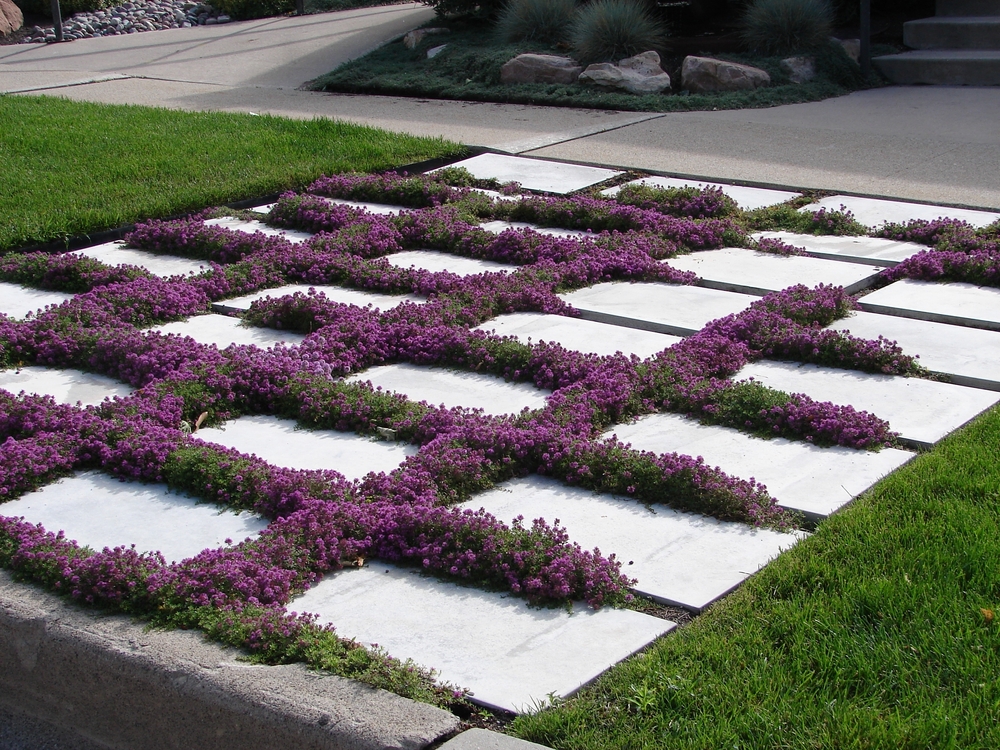
Creeping thyme is a popular choice for rock gardens due to its low-growing habit and fragrant foliage. This plant features small, aromatic leaves and vibrant purple flowers in late spring and early summer. It thrives in full sun and well-drained soil, making it perfect for rocky, dry spots. To care for creeping thyme, water it sparingly, as it does not like overly moist conditions.
It typically takes about three to four months for creeping thyme to establish itself. Once established, it requires very little attention beyond occasional trimming to keep it neat. This plant is also drought-tolerant, making it ideal for low-maintenance rock gardens. Its ability to spread and form a dense mat helps prevent weeds from taking root.
Sedum (Stonecrop)
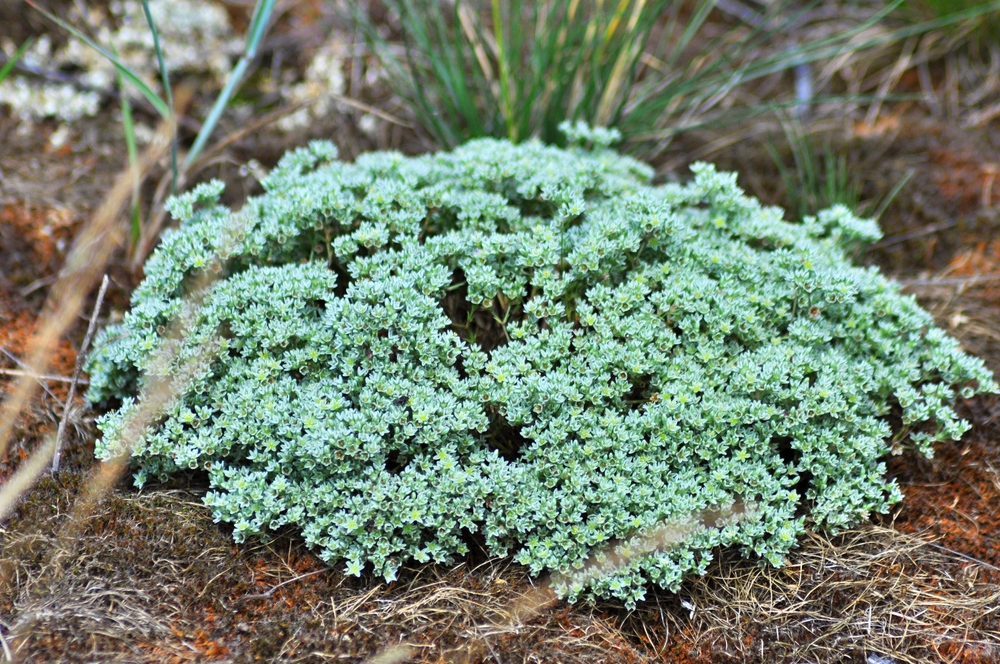
Sedum, also known as stonecrop, is an excellent choice for a rock garden due to its thick, succulent leaves and beautiful star-shaped flowers. It comes in various varieties, each with its own unique color, from green to red, and blooms in late summer. Sedum thrives in full sun and well-draining soil, making it a great addition to rocky areas. Water it moderately, but be sure to let the soil dry out between waterings.
Sedum can take around three months to grow and spread, but once it is established, it becomes quite hardy and can handle dry spells. It requires minimal care, with occasional deadheading to maintain its appearance. Sedum is also highly resistant to pests and diseases, making it an ideal low-maintenance option for your garden. It can also tolerate poor soil, so you do not need to worry too much about fertilizing it.
Alpine Aster
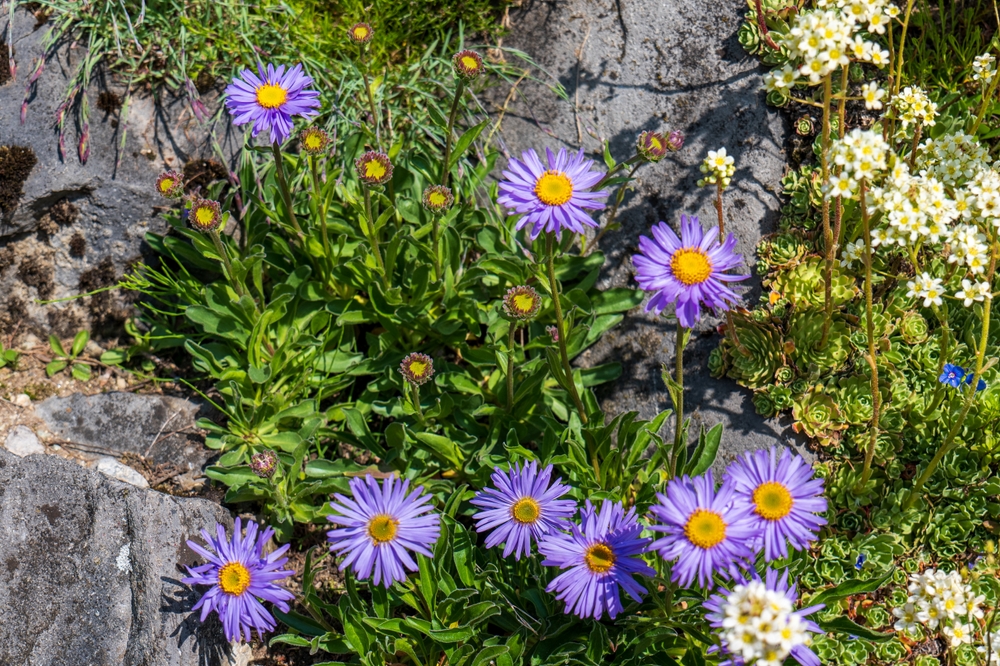
Alpine aster is a small but striking plant that adds pops of purple, blue, or pink flowers to a rock garden. Its compact, low-growing habit makes it an ideal choice for filling gaps between larger rocks. It prefers full sun to partial shade and well-drained soil. Water it regularly, but avoid overwatering to prevent root rot.
This plant typically takes about two to three months to bloom and starts growing rapidly once it is established. Alpine asters thrive in slightly acidic soils, so adding a bit of organic matter to your soil may encourage better growth. They require minimal pruning, only needing a light trim after flowering to keep them tidy. This plant also attracts pollinators, adding to the biodiversity of your garden.
Blue Fescue

Blue fescue is an ornamental grass that adds texture and color to your rock garden with its striking blue-green foliage. It forms dense, clump-like tufts and grows well in full sun or partial shade. Blue fescue thrives in well-drained soil and benefits from occasional watering during dry periods. However, it is relatively drought-tolerant once established.
It generally takes about four to five months for blue fescue to reach its full size, though it remains compact. To care for it, trim the plant back in early spring to remove dead foliage and encourage fresh growth. While it is low-maintenance, it benefits from occasional fertilization in poor soils. This grass is perfect for adding visual interest with its fine-textured leaves.
Cushion Spurge (Euphorbia polychroma)
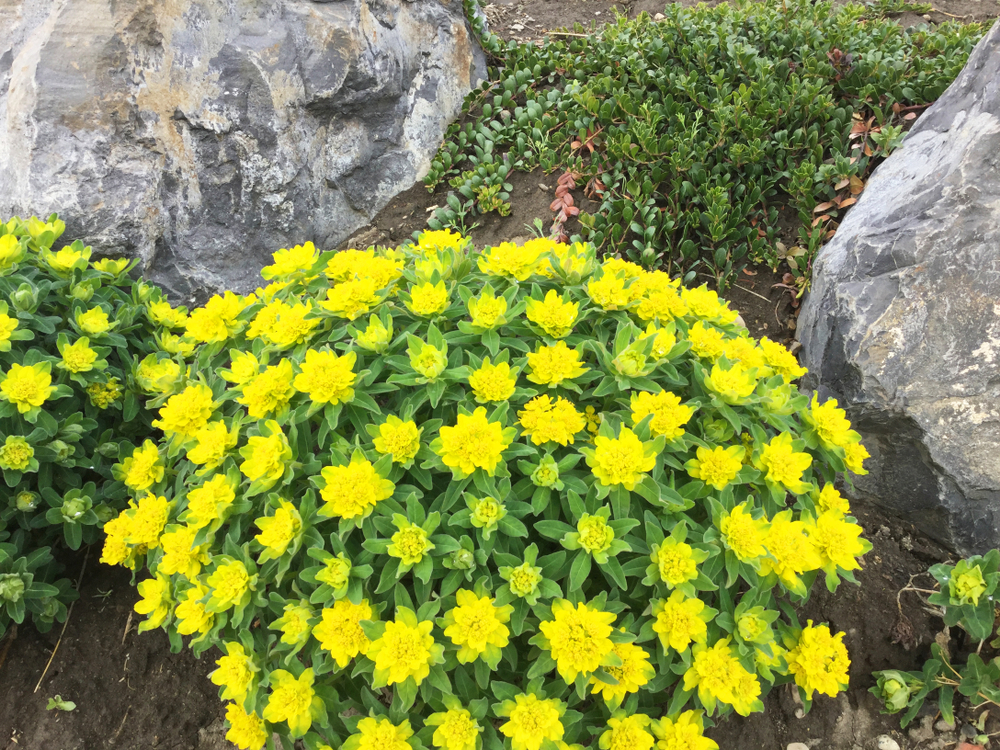
Cushion spurge is a hardy perennial that forms tight, rounded clumps of yellow-green flowers. It is an excellent choice for rock gardens due to its ability to thrive in poor, dry soil. This plant prefers full sun and does not need regular watering once established. Water it sparingly and ensure the soil drains well to avoid root rot.
It takes around two to three months for cushion spurge to grow and establish itself in a new location. Prune it back after it finishes flowering to maintain its tidy appearance. This plant is also deer-resistant, which makes it perfect for areas with wildlife. Its bright yellow-green flowers bring a cheerful touch to your garden in the spring and early summer.
Rock Cress (Arabis)
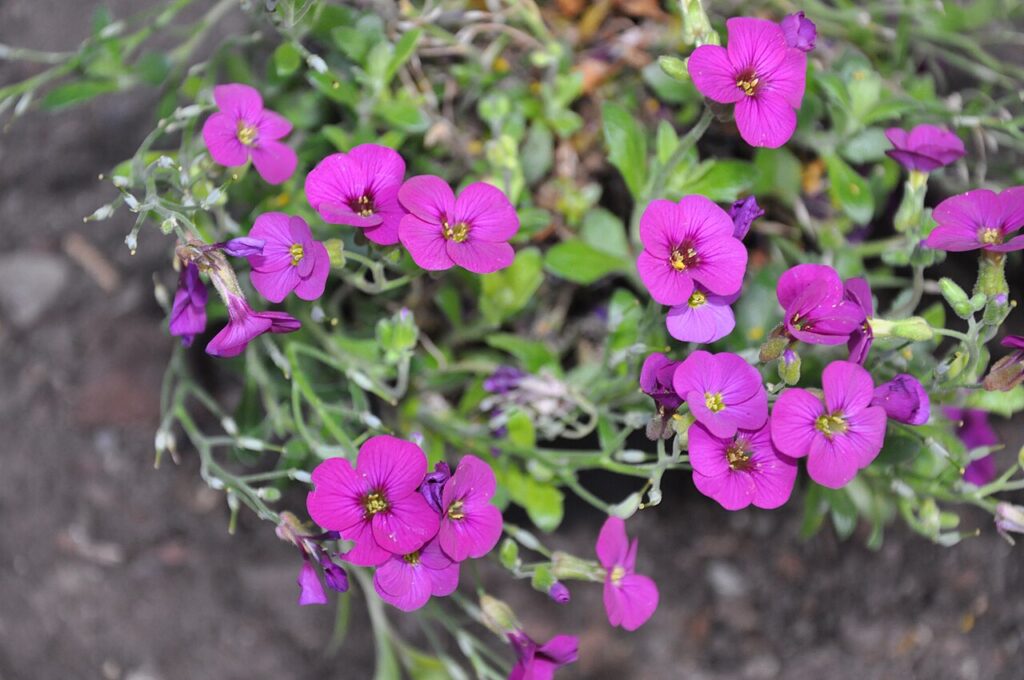
Rock cress, also known as Arabis, is a low-growing perennial that is perfect for adding color to rock gardens. It produces white, pink, or purple flowers in early spring, creating a striking contrast against the green foliage. This plant thrives in full sun and well-drained soil, making it ideal for rocky, dry areas. Water it moderately but avoid excessive moisture, as it is susceptible to root rot in soggy conditions.
Rock cress takes around two to three months to bloom, with a rapid growth rate during the growing season. It requires little care beyond occasional trimming to keep it neat after flowering. Rock cress is perfect for growing in crevices or between rocks, as it forms a dense mat that prevents weeds. It also attracts bees and butterflies, enhancing the biodiversity of your garden.
Ice Plant (Delosperma)
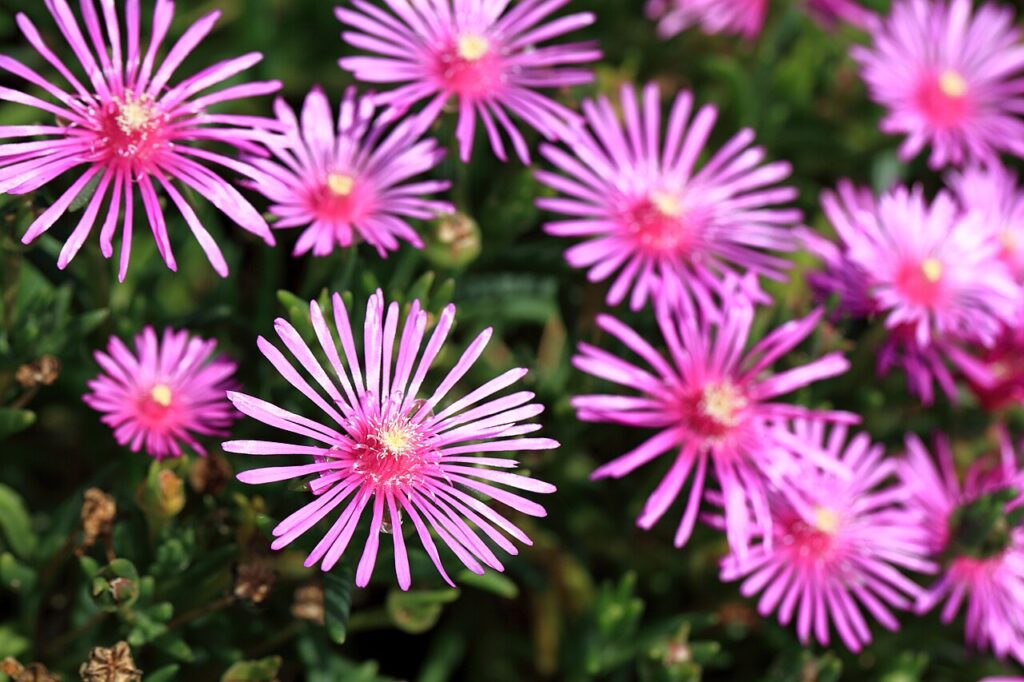
Ice plant is a vibrant, fast-growing succulent that features bright pink, purple, or yellow flowers. Its fleshy, succulent leaves help it retain water, making it a great choice for dry, rocky environments. This plant prefers full sun and well-drained soil, thriving in areas with low water retention. Water it sparingly once it is established, as it does not need frequent watering.
Ice plant typically takes about three months to grow and start flowering. It requires minimal maintenance, only needing a trim in the late fall to remove spent flowers. The plant’s ability to thrive in poor soil and its resistance to drought make it a popular choice for rock gardens. Its stunning flowers provide a colorful, long-lasting display during the summer months.
Thyme (Thymus vulgaris)

Thyme is a versatile and hardy herb that works well in rock gardens due to its compact growth and fragrant leaves. This plant produces small purple or pink flowers in the summer and thrives in full sun and well-drained, slightly alkaline soil. It requires minimal watering once established, as it is drought-tolerant.
Thyme generally takes around three to four months to grow and spread, forming a dense mat that works well for filling in gaps. For optimal growth, prune the plant in early spring to encourage new shoots. Thyme also attracts beneficial insects, such as bees and butterflies, making it a great addition to your garden. It can also be harvested for culinary use, making it a practical and beautiful choice for any rock garden.
Dwarf Fountain Grass (Pennisetum alopecuroides)
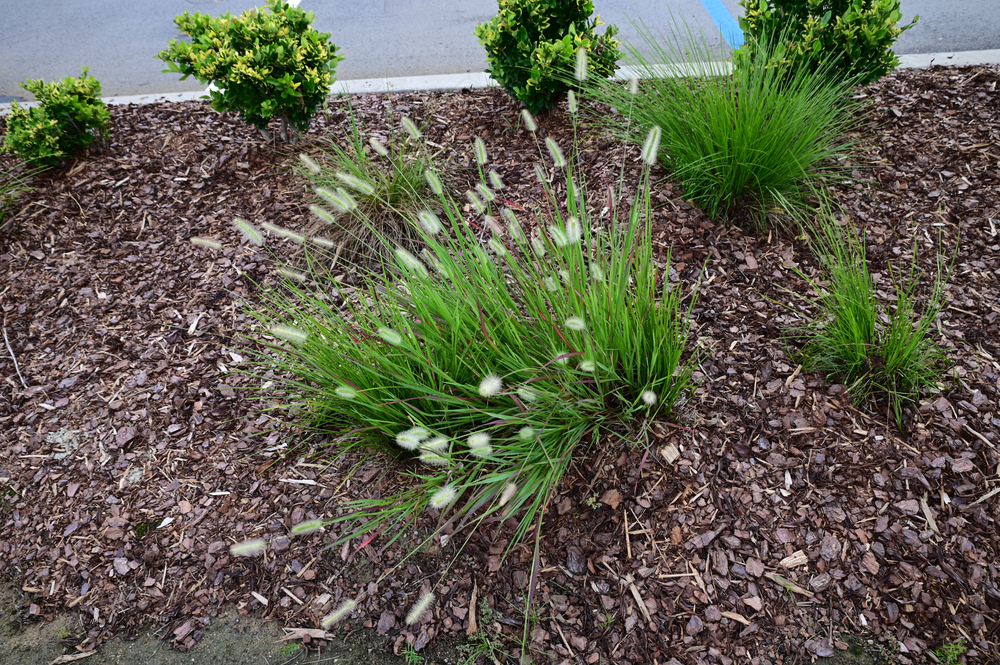
Dwarf fountain grass is a compact, ornamental grass that features feathery, arching flowers in shades of pink and purple. It adds texture and movement to a rock garden with its graceful foliage. This plant thrives in full sun and well-drained soil, requiring moderate watering during dry spells. However, it is drought-tolerant once established.
It takes around four to five months for dwarf fountain grass to grow and reach its full potential. Trim the grass back in early spring to remove dead growth and promote fresh shoots. This plant is perfect for adding soft texture to rock gardens and is particularly effective when planted alongside boulders or larger plants. Its low-maintenance nature makes it an ideal choice for busy gardeners.
Creeping Jenny (Lysimachia nummularia)
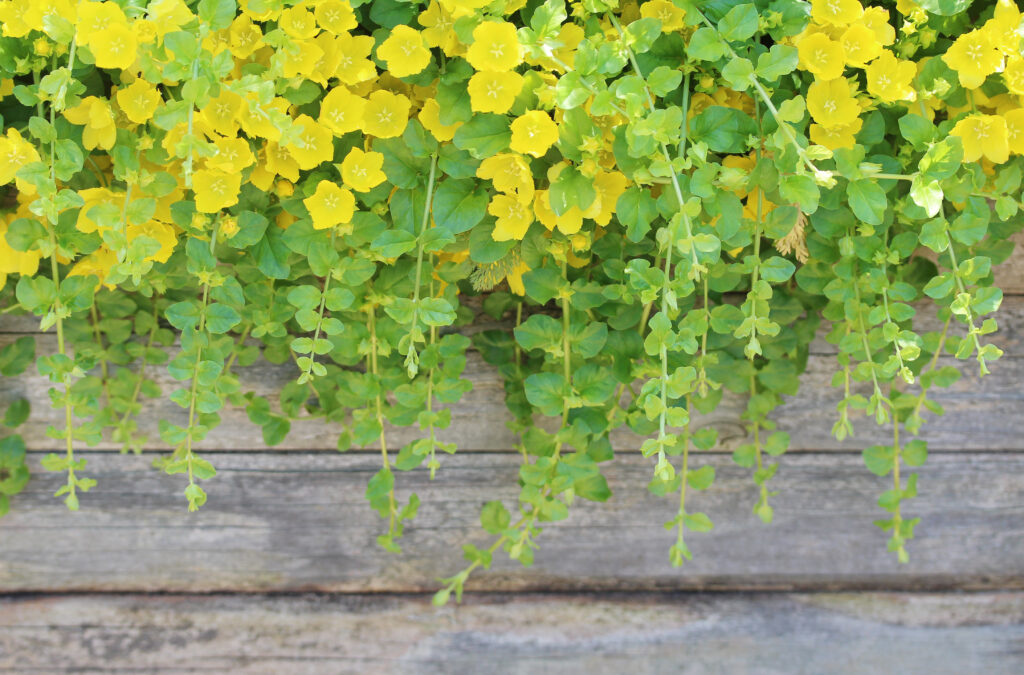
Creeping Jenny is a fast-growing ground cover plant that thrives in rock gardens due to its spreading habit and vibrant green or golden foliage. It produces small yellow flowers in the late spring or early summer. Creeping Jenny prefers partial shade and moist, well-drained soil, but it can tolerate dry conditions once it is well-established.
It takes about two to three months for Creeping Jenny to establish itself, spreading quickly to cover large areas. To keep it under control, trim the plant back in the late fall to prevent it from overtaking other plants. Creeping Jenny works well in hanging baskets or as a ground cover around rocks. Its vibrant color and quick growth make it a popular choice for filling in empty spaces in rock gardens.
Lavender
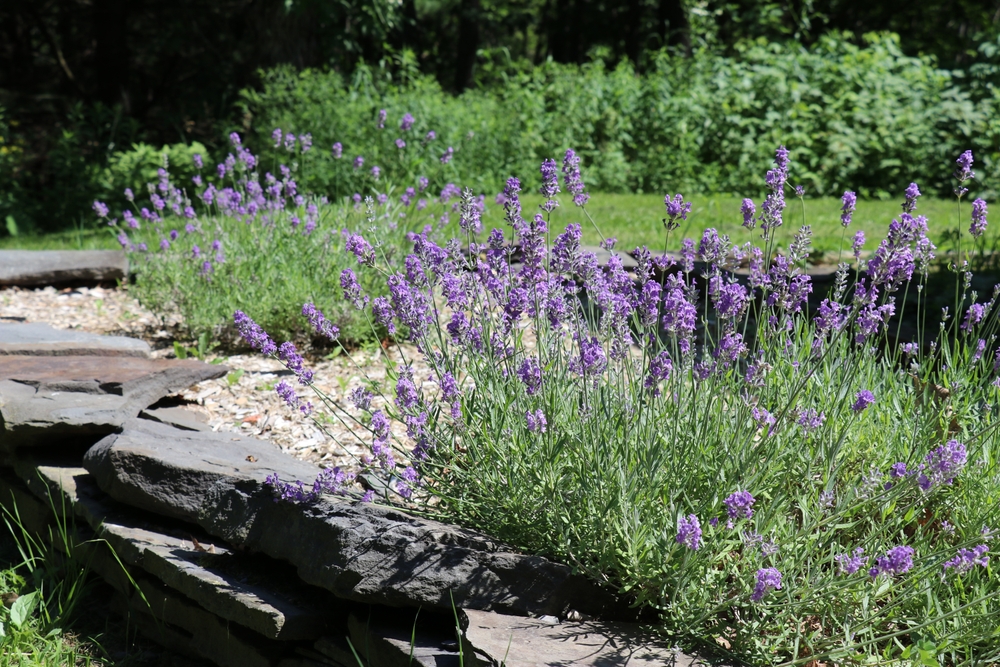
Lavender is a fragrant, evergreen shrub that adds a touch of elegance to any rock garden. It features narrow, silvery leaves and purple or blue spikes of flowers that bloom in mid to late summer. Lavender thrives in full sun and well-drained, slightly alkaline soil. Water it infrequently but deeply, as it does not like to sit in wet soil.
Lavender typically takes around four months to grow and bloom, reaching its full size after a couple of years. To keep it looking its best, prune it back in early spring to maintain its compact shape. This plant is also highly fragrant, making it a wonderful addition to gardens where you want to attract pollinators. Its drought-tolerant nature makes it ideal for rock gardens, as it requires little maintenance once established.
Hens and Chicks (Sempervivum)
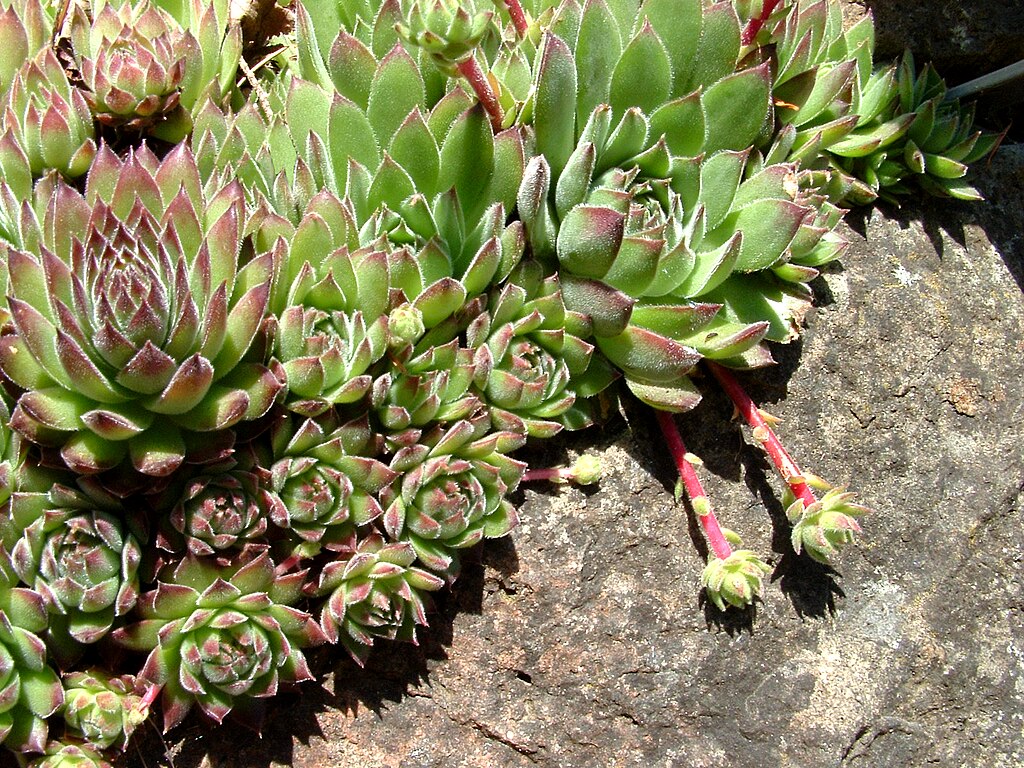
Hens and chicks are small, rosette-forming succulents that thrive in rocky, dry conditions. These plants produce offsets (the chicks) around the central hen plant, which gives them their name. They prefer full sun and well-drained soil, making them perfect for rock gardens. Water them lightly, as they are highly drought-tolerant once established.
It takes about three months for hens and chicks to grow and spread, but they are incredibly low-maintenance. These plants require very little care beyond occasional deadheading to remove spent flowers. Their unique appearance and ability to thrive in poor soil make them ideal for rock gardens. Hens and chicks are also resilient to pests, making them a reliable choice for any garden.
Yucca
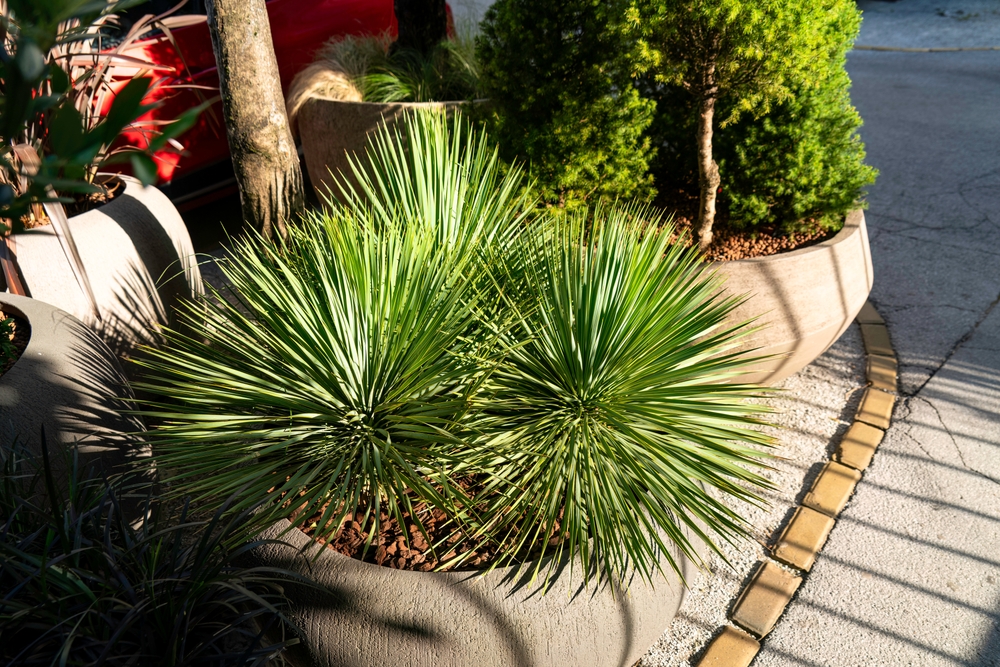
Yucca is a striking, drought-tolerant plant that adds architectural interest to rock gardens. It features long, spiky leaves and produces tall, creamy white flower spikes in the summer. Yucca prefers full sun and well-drained, slightly alkaline soil. Water it occasionally, but avoid overwatering as it is highly drought-tolerant once established.
It takes around three to four months for yucca to establish itself, but it is a slow-growing plant. Once it is established, it requires minimal care beyond occasional trimming to remove dead leaves. Yucca is a great choice for adding a bold, sculptural element to your rock garden. Its ability to thrive in harsh conditions makes it an ideal low-maintenance option for dry, rocky areas.
A rock garden is a perfect way to create a striking outdoor space with minimal effort. By selecting the right plants and following simple care tips, you can enjoy a flourishing garden all year. Whether you are a beginner or an experienced gardener, these plants are sure to thrive in your garden.
This article originally appeared on Avocadu.
